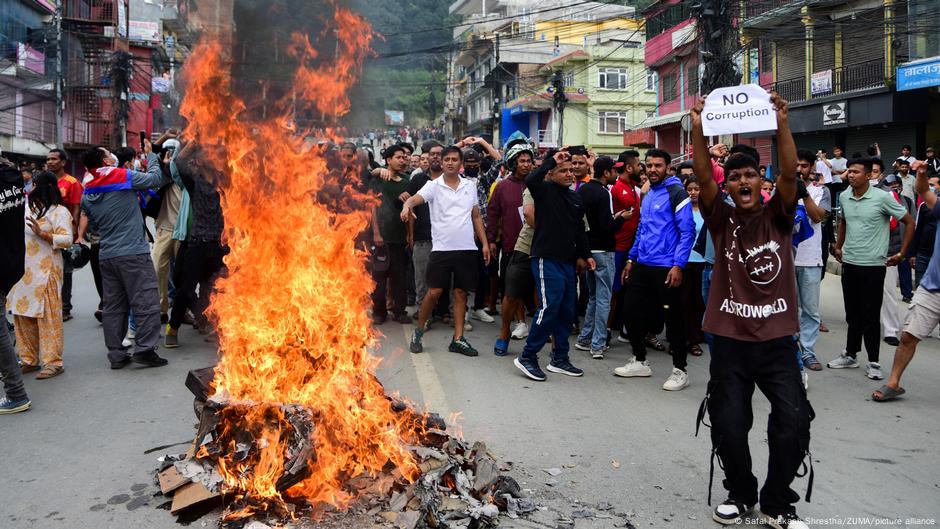Over the past two months, Gen Z-led protests have rocked parts of South and Southeast Asia – from Kathmandu to Jakarta, Dili to Manila.
While Nepalese protests toppled the country’s government, recent youth-led protests in Southeast Asia have been less destructive, though they have forced authorities to make rare concessions to tackle elite perks and corruption.
The spark varies by country, but the spark is the same: stagnant prospects for young people, rising inequality, and the daily feed of elite privilege on Gen Z’s phone screens.
A new update from the World Bank this month outlines the mood across the continent. One in seven youth in China and Indonesia is unemployed, and much of the region’s job creation has shifted from factories to low-wage services, weakening the ladder that once pulled millions into the middle class.
Surprisingly, the “poverty vulnerable” group, in which the youth are over-represented, is now larger than the middle class in most Southeast Asian economies.
Youth angry over wealth inequality
Phil Robertson, director of Asia Human Rights and Labor Advocates, told DW it’s no secret why so many recent protests are led by youth — flashy social media posts showcasing elite wealth, often seen as the spoils of government corruption, are fueling their anger.
Robertston said, “The complete failure of governments across the region to bridge the growing gap between the richest and poorest means there is fertile ground for protests by young people who believe they have nothing to lose by taking to the streets.”
Wave of protest led by youth
In Nepal, youth protests against bans on major social media platforms, coupled with long-running anger over corruption, escalated dramatically on 8 September.
The movement ousted the government of Prime Minister Khadga Prasad Sharma Oli from power, forced the dissolution of Parliament, and led to the reversal of the social media ban.
Soon after, Indonesia saw weeks of deadly unrest, initially sparked by anger over legislators’ generous allowances that left ordinary people facing subsistence crises. Protests that began in late August spread across the country and left at least ten people dead and thousands detained by Indonesian authorities.
Ultimately, however, President Prabowo Subianto responded by reducing privileges for politicians and carrying out a sweeping reshuffle that ousted the tough, business-friendly Finance Minister Sri Mulyani Indrawati and other top officials.
The wave then reached Timor-Leste, one of the poorest countries in Asia, where in late September there were several days of student-led rallies outside the parliament, denouncing a plan to buy new vehicles for MPs and a law granting lifetime pensions to MPs.
The government bowed before the protesters. Lawmakers voted to scrap pensions law and postpone car purchases, marking a rare and quick concession to pressure on the road.
In the Philippines, thousands of youth protesters gathered in Manila’s Rizal Park in mid-September, rallying against the loss of approximately $1.8 billion (€1.56 billion) due to alleged corruption in fake flood-relief projects.
Economic injustice, elite privilege main issues
Given the widespread participation of youth in these protests, they have earned the nickname “Gen Z rebellion”, broadly referring to those born between 1997 and 2012.
However, according to Geeta Putri Damayana, a PhD scholar at the Australian National University, although youth provided the catalytic energy and importantly the digital infrastructure, their core issues of economic injustice and elite privilege resonate across generations.
In both Indonesia and Nepal, union members, informal workers and older civil society networks joined the marches once the initial student push broke the fear barrier.
Bridget Welsh, honorary research fellow at the University of Nottingham’s Asia Research Institute Malaysia, told DW that the protests in Timor-Leste and Indonesia were more strongly driven by youth than those in the Philippines, although youth played important roles in all three movements.
This is not a completely new phenomenon. Thailand’s nationwide youth-led protests in 2020–21 challenged establishment power, even demanding reforms to the monarchy.
However, the movement did not lead to structural change, and once protests reached the point of threatening government security, “the Thai state was prepared to adopt various forms of violent repression to counter the mobilization,” Mark Kogan, associate professor of peace and conflict studies at Kansai Gaidai University in Osaka, told DW.
“What happened in Nepal is difficult to imagine repeating anywhere in Southeast Asia,” he said.
Damyana said the recent protests also differ from historical upheavals such as the popular uprisings against authoritarian leaders in Indonesia and the Philippines.
“Their focus was not on the immediate overthrow of the entire government, but on demanding systemic accountability and better governance within existing political structures,” he said.
Will the region see more Gen Z rebellion?
Analysts said governments in Southeast Asia are now taking note that exclusive privilege is flammable.
Yet, the incentives to push back remain strong, and in countries facing democratic erosion, such as Indonesia and the Philippines, authorities are already framing youth actions as “riots,” “anarchists,” or even “foreign funded,” a familiar ploy to delegitimize dissent.
The toughest test will be converting road electricity into a slow, technological improvement. That means campaigning for credible election rules, strengthening anti-corruption bodies, and writing detailed legislation — non-glamorous work that rarely trends on TikTok.
Damayana said, “The energy required to establish accountability in institutions is immense – and the process is easily captured or undermined by the same elites the movements seek to curb.”
Still, experts say growing political and economic grievances could fuel more youth-led protest movements in the region.
Thailand, which has been mired in political crisis since March, is expected to hold new elections before the end of the year.
The youth-focused Move Forward party won the final vote, but was denied the opportunity to form a government by the establishment parties and was later dissolved by the Constitutional Court on minor charges.
It has since reorganized as the People’s Party, which remains popular. Should he win the next election and face similar obstacles in forming the next government, young Thais may respond with hospitality.
In a world where young people are constantly in close contact through social media and news spreads like wildfire, Robertson said, no one should be surprised that successful Gen Z protests in one country would encourage similar protests in other countries.
He said, “This is a positive development towards greater accountability and equality that is long overdue, and ideally it will continue to expand to end the more unbridled plunder of state resources and human rights abuses.”
Edited by: Srinivas Majumdaru





Leave a Reply